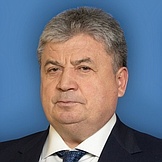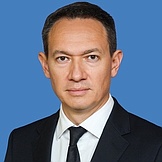Regional flags and emblems


PROFILE
Established 1920 as the Tatar ASSR
The Tatar SSR since 1991
The Republic of Tatarstan (Tatarstan) since 1992
Capital Kazan
Republic of Tatarstan is part of the Volga Federal District
Area 67,8 sq km
Population 4 016 600 (2025)
Ethnic groups
(2020 National Census, %)
Tatar – 53,57
Russian – 40,34
Other – 6,09
Administrative divisions (2024)
Municipal districts – 43
City districts – 2
Rural towns – 39
Rural districts – 872
Geography and climate
The republic is in the east of the East European Plain, between the Volga and Kama rivers, where the Central Russia meets the Urals-Volga Region. Over 90% of its territory is covered by lowland plains, with some highlands in the west and the southeast, including the Volga Upland and the Bugulma-Belebey Upland.
The republic borders on the Republics of Mari El, Bashkortostan, Chuvashia, Udmurtia, the Kirov, Orenburg, Samara and Ulyanovsk regions.
There are about 3,000 rivers and several thousands large and small lakes in the republic. The largest reservoirs are the Kuybyshev Reservoir and the Nizhnekamsk Reservoir.
The main rivers in the republic are: the Volga, the Kama and their tributaries, such as the Vyatka, the Belaya, the Sviyaga, the Ik, the Izh, the Mesha, and the Sheshma.
The climate is temperate continental. January temperatures average –11.9°C. July temperatures average 19.2°C.
There is the Volga-Kama State Nature Reserve, the Nizhnyaya Kama National Park and a number of regional wildlife sanctuaries in the republic.
Government
The legislative branch is represented by the State Council (the Parliament) of the Republic of Tatarstan which is the permanent, representative and only one legislative body of authority in the republic. The members are elected for five years.
The State Council of the Republic of Tatarstan has 100 deputies; 50 of them run in single-member constituencies and the other 50 in the single republican electoral district in accordance with republican lists of candidates nominated by political parties. The current State Council of the Republic of Tatarstan was elected in September 2024. Its term expires in September 2029.
The Head (Rais) of the Republic of Tatarstan is the republic’s highest-ranking official, who directs the executive authorities in the Republic of Tatarstan, ensures their interaction with the State Council of the Republic of Tatarstan, and determines the guidelines for the Cabinet of Ministers of the Republic of Tatarstan.
The Cabinet of Ministers of the Republic of Tatarstan – the Government of the Republic of Tatarstan – is the permanent supreme body of executive authority of the republic, formed by the Head of the Republic of Tatarstan. The Prime Minister of the Republic of Tatarstan is appointed by the Head (Rais) of the Republic of Tatarstan in coordination with the State Council of the Republic of Tatarstan. The Cabinet of Ministers of the Republic of Tatarstan reports to the Head (Rais) of the Republic of Tatarstan.
The Head (Rais) of the Republic of Tatarstan is elected for a five-year term by the citizens of the Russian Federation who permanently reside in the republic. The term of the incumbent Head (Rais) of the Republic of Tatarstan expires in September 2025.
Economy and natural resources
Tatarstan is one of Russia’s most economically developed regions.
The republic’s main natural resource is oil, but there is associated gas in addition to rich deposits of asphalt oils. There are also over 100 coal deposits in the South Tatar, Melekess and North Tatar districts.
The regional GDP is mostly concentrated in industry, agriculture and construction.
The republic’s economy is mostly export-oriented. It is based on oil production and refining. The oil, gas and chemical complex represents about 50% of the total volume of industrial production and is the most important one in respect of social and economic development, local employment and pumping up the budget of all levels.
The largest industrial enterprises of the Republic of Tatarstan are Tatneft, oil refineries and petrochemical plants of TANEKO, KAMAZ, and Kazanorgsintez.
Other industries contributing to the republic’s industrial potential are manufacturing enterprises represented by machine building, production of equipment, vehicles and transport equipment, non-metal mineral products, resin and plastic products, electrical equipment, electronic and optical equipment, wood processing and manufacturing of wooden products, pulp-and-paper industry, petroleum products, the light and food industries.
Manufacturing industries are growing thanks to the renewed positive growth dynamic in the production of vehicles and electrical equipment, with sustained development of chemical and petrochemical industries, and the food industry.
Over 110 investment projects at various development stages are currently being implemented in the region. The largest investment share belongs to the power production and the petrochemical industry.
One of the most significant investment project is the construction of the TANEKO refining complex in Nizhnekamsk financed by Tatneft.
Tatarstan is one of Russia’s leading regions in the IT and internet sectors. Innopolis, Russia’s youngest city built near Kazan, boasts a special economic zone with comfortable working and living conditions for IT professionals, and Innopolis University, where several thousand students from Russia and other countries are studying.
The power production complex is represented by thermal power stations, hydroelectric power plants and combined heat and power stations.
The republic’s agricultural complex almost completely satisfies the needs of the population in respect of basic agricultural products. The most developed agricultural industries include dairy and beef cattle breeding, poultry farming and crop production, which specialises in cultivation of grain, potatoes and vegetables.
Culture and tourism
The culture of Tatarstan was developed at the junction of two large Eastern and Western civilisations, a fact that explains the nature of its diversity.
The lives of numerous great figures in the history of culture were connected with Tatarstan. These include singer Feodor Chaliapin, writers Leo Tolstoy, Sergey Aksakov, Maxim Gorky and Vasily Aksyonov, poets Yevgeny Baratynsky, Gavriila Derzhavin, Marina Tsvetayeva and Nikita Zabolotsky, painters Ivan Shishkin and Nicolai Fechin, and musicians Oleg Lundstrem and Mikhail Pletnev. The poet Gabdulla Tuqay, poet and a hero Musa Dhalil, composers Farid Yarullin, Salikh Saidashev, Nazib Zhiganov, and Sofia Gubaidulina all made important contributions to the rich Tatar culture.
In Tatarstan there are numerous libraries, clubs, museums, theatre and film institutions, as well as architectural, historical and cultural monuments.
The Kazan Kremlin was included in the list of UNESCO World Heritage Sites as an outstanding example of a synthesis of Tatar and Russian influences in architecture. In 2014 the ancient Bolgar town was also included in this list. It is the place where Tatar ancestors accepted Islam in 922. Restoration of the ancient town of Bolgar is part of the complex project titled Tatarstan’s Cultural Heritage: the Island Town of Sviyazhsk and the ancient Bolgar.
Promotion of ethnic and cultural development of all peoples inhabiting Tatarstan is one of the key aims of the state cultural policy in the region.
Interethnic and interfaith concord is one of the three most important elements of Tatarstan’s success as a region of the Russian Federation, alongside with its high level of economic development and social and political stability.
Promoting its positive reputation, popularisation of its culture, preservation of the Tatar language and culture, and supporting Tatarstan citizens are also key directions of the cultural development of the Republic of Tatarstan.
The following international festivals have gained wide popularity: the Fyodor Chaliapin International Opera Festival, the Rudolf Nuriyev International Festival of Classic Ballet, the Europe-Asia Contemporary Music Festival, the Nauruz International Theatre Festival of Turkic Nations, and the Sozvezdiye-Yoldyzlyk Open Regional Television Youth Variety Arts Festival.
Tatarstan is especially proud of the Kazan International Muslim Film Festival, which has become a platform for productive dialogue between representatives of various cultures and denominations.
Additional proof showing the importance of the Tatar people’s contribution to contemporary world culture is the decision of TURKSOY, the International Organisation of Turkic Culture, to name Kazan the cultural capital of the Turkic world.
The main direction tourism is heading in Tatarstan is the organisation of trips to the republic's historical sites. Numerous architectural complexes and churches are in a perfect condition and always welcome visitors.
The island town Sviyazhsk which is the prototype of the fairy-tale island of Buyan in Pushkin’s stories, the thousand-year old town of Yelabuga, the Great Bolgar, and the beautiful Volga Region nature represent the republic’s cultural legacy. This is how the Tatar and Russian traditions, the Orthodoxy and Islam can elegantly intertwine.
There are also numerous other tourist attractions on the Volga River. These include the Romanov railway bridge built in the beginning of the previous century, the Pechishchi Section adored by scientists from all over the world, each layer of which corresponds to deposits of various epochs, and Volga (Syukeyev) karst caves in the region of the Kama Estuary, and numerous riverside churches with their amazing stories.


